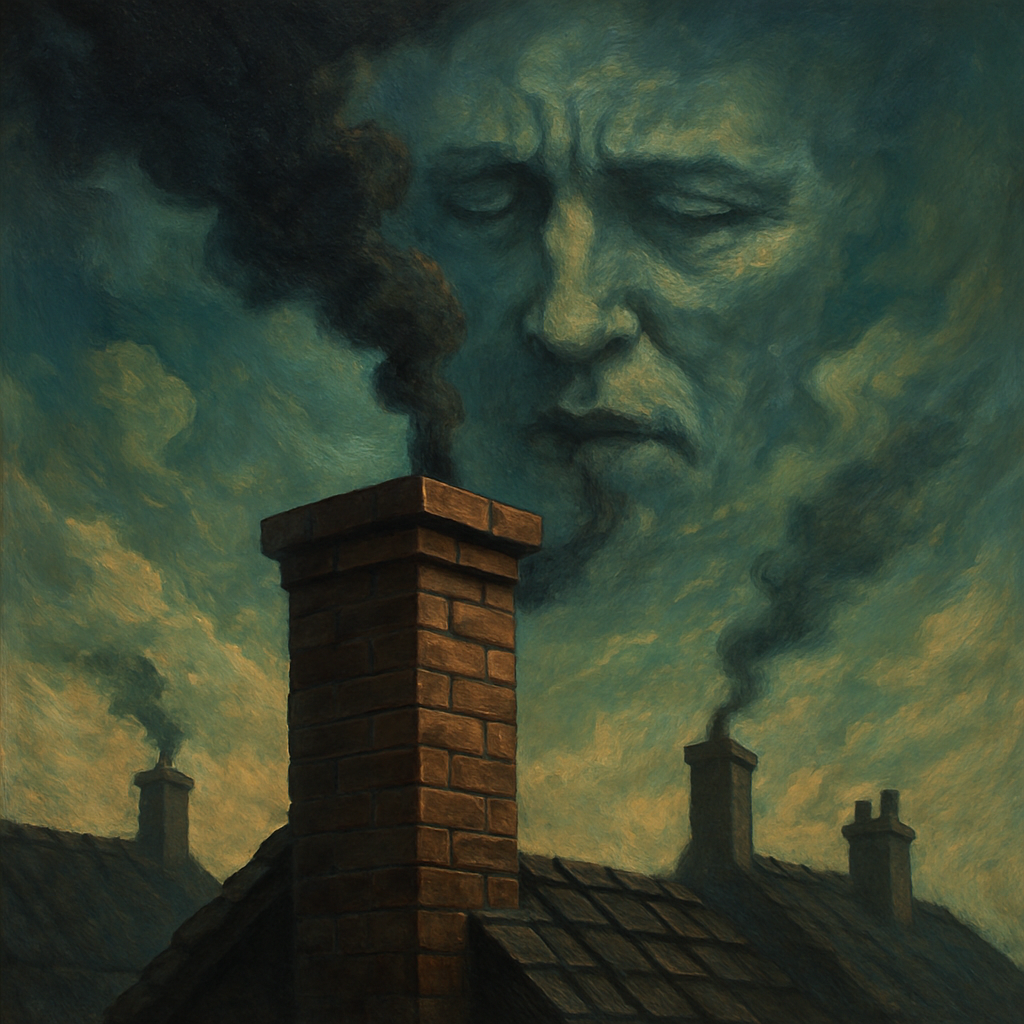Whispers from the Flue: A Chimney’s Tale of Smoke, Soot, and Secrets
They stand like stone sentinels, etched into rooftops with mortar and memory—chimneys, the silent throats of homes, their flues exhaling secrets into the sky. Most pass beneath them, blind to the tales woven in soot and smoke. But lean closer, and you might catch the whispers.
Let’s draw back the veil.
Table of Contents
🕯 The Ancient Function
Before thermostats and forced air, there was fire. And fire, ever hungry, needed breath. The chimney gave it lungs—a vertical shaft of draw and draft that pulled smoke upward and out, leaving warmth behind. A well-built chimney isn’t just a tunnel for smoke; it’s a machine of balance and physics. Hot air rises, pulling cooler air to feed the flames. The dance is delicate. The alignment, crucial.
And yet… most people think of the chimney only when things go wrong. A smoky room. A cold hearth. Or worse—flames where flames should not be.
🦴 Myths from the Mortar
Some say chimneys are safe as long as there’s no visible fire. Others believe a single cleaning a year is more than enough. But myths are like creosote—they build slowly, darken the truth, and can catch fire if left unchecked.
Myth #1: If it looks clean, it is clean.
Truth: Creosote, that dark, tar-like residue from burning wood, hides in the flue’s narrowest veins. It’s highly flammable and often invisible until it ignites.
Myth #2: I can burn just any wood.
Truth: Wet or “green” wood doesn’t burn clean. It hisses, sputters, and leaves heavy deposits. Only seasoned hardwood sings the cleanest songs through the flue.
Myth #3: Chimney caps are optional.
Truth: Leave it uncapped, and you’re inviting rain, debris, and curious critters. Birds have nested in worse.
🛠 A Shadow’s DIY Guide
If you dare to tend the chimney yourself, step with care. Not all maintenance requires a sweep’s brush or a mason’s trowel, but all of it requires respect.
1. Inspect the chimney cap.
Look for rust, dents, or missing mesh. A damaged cap invites water—and water is the slow death of brick.
2. Shine a light up the flue.
From the fireplace, use a flashlight and mirror (or your phone, if you’re bold) to check for black buildup or nests. If you see shiny, tar-like creosote, call a professional. Do not attempt to scrape it off yourself.
3. Test the draft.
Before lighting a fire, light a match and hold it near the opening. Watch the smoke. Does it rise up? Or does it waft into the room? A weak draft could mean blockage—or worse, structural damage inside the stack.
4. Check the firebox and damper.
The firebox should be free of cracks. The damper should open smoothly and close tightly. If it sticks, it may be rusted or warped from moisture.
🌫 When the Wind Whispers Back
Chimneys aren’t just parts of the house—they’re conduits. For warmth, yes. But also for memory. For forgotten meals and winter gatherings. For the slow exhale of a home settling into night.
And in folklore? They’ve always been a threshold. Santa comes through one. So do ghosts in old tales. The chimney is a mouth, and sometimes… it speaks.
So treat it well. Sweep it. Seal it. Listen to it.
Because when a chimney fails, it doesn’t shout—it whispers smoke into your lungs, quietly, dangerously, unseen.
Final Ember
Before you strike the next match, ask yourself: Have I listened to the chimney’s song? Or am I simply waiting for silence to burn?

![]() Contact us today to schedule your cleaning services and enjoy a cleaner, safer, and more efficient home. Your well-being is our top priority!
Contact us today to schedule your cleaning services and enjoy a cleaner, safer, and more efficient home. Your well-being is our top priority! ![]()
𝓔𝓿𝓮𝓻𝓰𝓻𝓮𝓮𝓷 𝓐𝓲𝓻 𝓓𝓾𝓬𝓽 𝓒𝓵𝓮𝓪𝓷𝓲𝓷𝓰
+1 801-383-3511
evergreenserviceutah@gmail.com
#AirDuctCleaning#CleanAirDucts#IndoorAirQuality#HVACCleaning#DuctworkCleaning#HealthyHome#BreatheClean#FireSafety#CleanDryerVents#SafetyFirst#HomeMaintenance#ApplianceCare#FireplaceMaintenance#SafeHome#CleanChimney#ChimneySweeps#ChimneyInspection#blog
